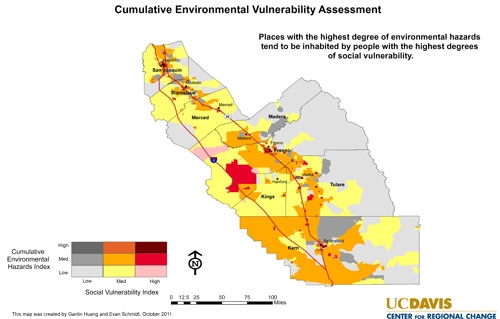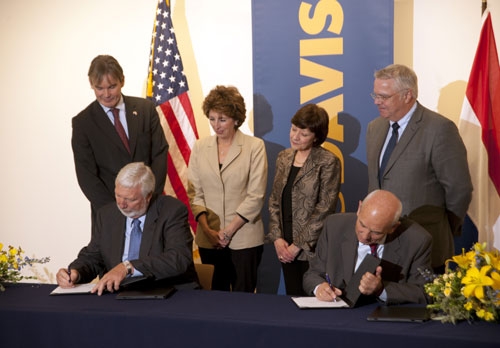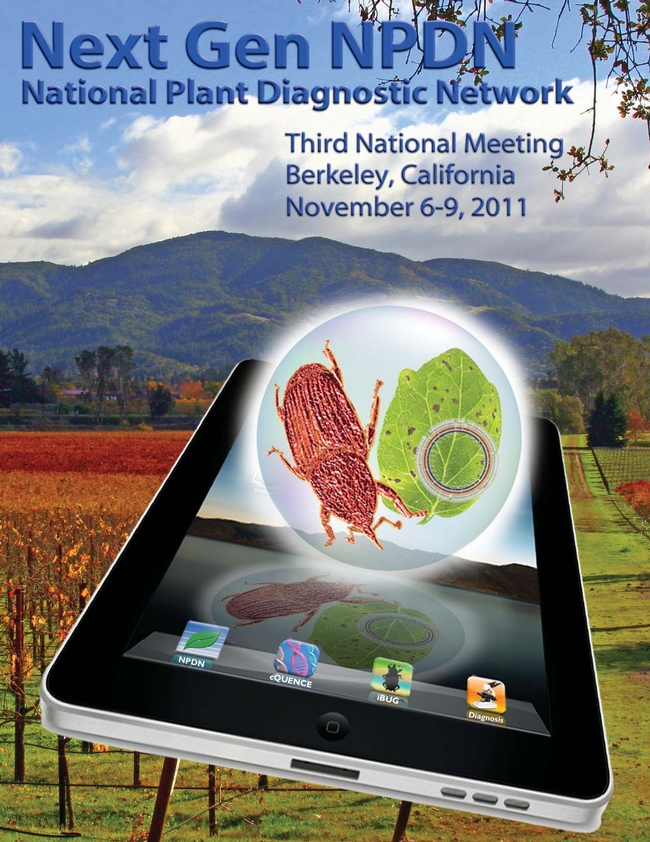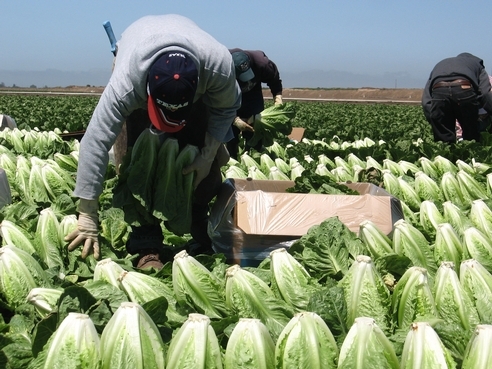- Author: Pamela Kan-Rice
While California's San Joaquin Valley is home to some of the nation's richest agricultural resources, half of the people who live and work there face elevated levels of air and water pollution coupled with poverty, limited education, language barriers, and racial and ethnic segregation, according to a three-year UC Davis study.
The study, "Land of Risk/Land of Opportunity," also found that residents of the region report more environmental hazards than are currently documented or addressed by state agencies.
"Our conclusion is that immediate and comprehensive action is needed by local, regional and state policymakers to protect the health and well-being of the region's most vulnerable residents," said study leader Jonathan London, director of the UC Davis Center for Regional Change and an assistant professor of human and community development.
The study was conducted in partnership with the San Joaquin Valley Cumulative Health Impact Project, a community-university partnership with environmental health and social justice organizations in the San Joaquin Valley. This work is consistent with UC Davis' goals of seeking knowledge and solutions that sustain and improve quality of life for people in neighboring regions and around the world.
The study uses a new measure developed by scholars on this project, but drawn from methods used by other researchers -- the Cumulative Environmental Vulnerability Assessment -- to identify the locations and populations within the San Joaquin Valley that are at greatest risk.
According to that measure, 51 percent of San Joaquin Valley residents experience high cumulative environmental vulnerability, with more than half of those experiencing acute cumulative vulnerability.
Home to 4 million people, the San Joaquin Valley spans 300 miles through the center of the state. The region is a major transportation artery connecting northern and southern California and contains three of what the U.S. Department of Agriculture designates the nation's top-producing agricultural counties -- Fresno, Kern and Tulare.
The report found:
* The cumulative dangers were not evenly distributed across the region. Some of the communities facing the greatest levels of acute vulnerability include west Fresno, Monterey Park, Kettleman City, Matheny Tract, Earlimart and Wasco.
* Environmental and social vulnerability among at-risk populations persist, despite special attention from regulators and policymakers.
* Those with limited education and English fluency face difficulties advocating on their own behalf.
"With this report, we finally have the data that can lead to collaboration and action," said Kevin Hamilton, deputy chief of programs at Clinica Sierra Vista and a member of the San Joaquin Valley Cumulative Health Impact Project. "It's obvious to all that there are health and other disparities, but there's been a lack of data available to help communities, businesses and government collaborate to take next steps."
The report recommends that analysis of cumulative effects uncovered in the study be integrated into existing policy and planning frameworks in the region, and that special attention be focused on higher-risk areas.
"With one in two residents at elevated risk and one in three at extreme risk, now is the time to solve big problems by looking at the big picture. Without broad discussion and creative solutions, the San Joaquin Valley, especially its children, can't reach its full potential," said Sarah Sharpe, of Fresno Metro Ministry, who coordinates the San Joaquin Valley Cumulative Health Impacts Project.
"This report provides policymakers, government agency leaders, and community activists a tool to measure the cumulative impacts on Valley residents and a road map to prioritizing solutions to these problems."
The study was supported by funding from the Ford Foundation, the UC Davis John Muir Institute of the Environment, the William and Flora Hewlett Foundation, and the Community Forestry and Environmental Resource Partnerships graduate fellowship.
The report is available at http://regionalchange.ucdavis.edu/projects/current/ceva-sjv.

###
Media contacts:
Edit Ruano, Full Court Press Communications, (510) 550-8176, edit@fcpcommunications.com
Karen Nikos, UC Davis News Service, (530) 752-6101, kmnikos@ucdavis.edu
- Posted By: Sandra Willard
- Written by: Ann Filmer, UC Davis College of Agricultural and Environmental Sciences, (530) 754-6788; afilmer@ucdavis.edu

With a global population that now tallies 7 billion, scientists and thought leaders worldwide are resolutely determining how to sustainably feed the additional 2 billion people who are expected to arrive in the next 40 years, while maintaining environmental quality and human nutrition and well-being.
“We are facing challenging times,” said Aalt Dijkhuizen, president and chairman of Wageningen UR. “We have to increase food production while decreasing the environmental footprint. That is a major global challenge.”
“This partnership will allow two of the best institutions in the world to address the challenges of environmental quality and food production,” added Neal Van Alfen, dean of the UC Davis College of Agricultural and Environmental Sciences. “Together we will form worldwide networks with other universities, government institutions and especially with businesses that can implement new research technologies. We will develop solutions that really have an impact.”
In addition to Van Alfen, UC Davis and California were represented at the signing by UC Davis Chancellor Linda Katehi and Karen Ross, secretary of the California Department of Food and Agriculture. Dijkhuizen was joined by Secretary-General Chris Buijink of the Netherlands Ministry of Economic Affairs, Agriculture and Innovation, and Netherlands Consul General Bart van Bolhuis to represent Wageningen UR and the Netherlands.
“This partnership will bring lead scientists, businesses and government partners together to provide science-based answers, innovations and sound policy that benefit the public,” Katehi said. She stressed the need for scientists to help develop public policy.
Dijkhuizen noted that this “golden triangle” of private industry, government and university research institutions is an effective way to implement scientific technologies and innovations.
The CDFA secretary and Netherlands secretary-general highlighted the need for government in this partnership. Ross stressed the agricultural production and nutrition components of the agreement, and how they will benefit the health and well-being of general consumers, while assuring a strong agricultural future in California. Buijink said that job growth, which benefits everyone, will be a critical outcome of extending the research information and technologies to business partners in food-production, agricultural and environmental industries.
Water is a major issue related to food production and environmental quality, not only in the U.S. and the Netherlands but throughout the world and especially in developing areas. The consul general said that water issues will be at the forefront of research between the institutions.
“Research that addresses water-saving technologies in agriculture will help create new irrigation and water-storage innovations that benefit farmers, consumers and everyone who has a stake in water issues,” said van Bolhuis.
This agreement between UC Davis and Wageningen UR will address the pressing global issues of population growth, food security and environmental sustainability through research on efficient production and postharvest technologies, reduced energy and environmental inputs, and scientific breakthroughs in areas such as genomics, biotechnology and new biofuels.
The agreement will also establish scholarly exchange programs for students and postdoctoral scholars between the two universities in order to expand knowledge of global issues and technologies related to food, agriculture and the environment. The courses and workshops will provide leadership opportunities for students and postdocs who will go on to become scientists, decision makers and leaders in businesses, government, universities and other organizations.
###
- Contact: Brenda Dawson, (530) 754-3914, bldawson@ucdavis.edu
Plant pests and diseases that threaten U.S. agriculture and food security is the topic that will bring together more than 180 scientists, diagnosticians and regulatory officials at a conference Nov. 6-9 in Berkeley.

“This conference is really looking at contemporary and cutting-edge approaches for the detection and diagnosis of plant health problems,” said Richard Bostock, UC Davis professor and plant pathologist and National Plant Diagnostic Network executive director. “With our network, we’re also helping train the next generation of plant diagnosticians and plant health professionals.”
Symposia, workshops and field trips will focus on new and emerging plant pathogens and pests, including citrus greening, thousand cankers disease, light brown apple moth, European grapevine moth and others. Presentations will address state-of-the-art methods for detection and diagnosis.
Karen Ross, secretary of the California Department of Food and Agriculture, is a conference keynote speaker.
Conference tours will provide participants with a closer look at plant health issues affecting walnut orchards, oak trees, vineyards, ornamental plants and redwoods. Tours will also examine the inspection station at the Port of Oakland and CDFA’s plant diagnostic laboratory.
The National Plant Diagnostic Network focuses on the early detection, accurate diagnosis and rapid communications needed to help mitigate the impact of endemic, emerging and exotic pathogens and pests that attack agricultural, forest and landscape plants in the U.S.
“Never before has there been such a cohesive integration of the various agencies and laboratories that deal with these problems,” Bostock said. “If a new pest or disease appears in the U.S., we have labs that are ready and trained to attack the problem. We can provide surge capacity to process tens of thousands of samples.”
The network provides resources for diagnostic laboratories and diagnostician training, develops and delivers educational programs that reach thousands of individuals who are in positions to be the first detectors of a plant disease or pest outbreak, and establishes and practices communication procedures to alert those who need to know when an outbreak occurs.
In 2002, UC Davis was identified as one of six lead institutions for the new network, and Bostock was named head of its western region, which includes 10 western states and the U.S. territories in the Pacific. The network receives funding from the USDA National Institute of Food and Agriculture.
###
MEDIA CONTACT:
Richard Bostock, (530) 752-0308, rmbostock@ucdavis.edu
- Posted By: Sandra Willard
- Written by: Eve Hightower, (530) 752-8664, ehightower@ucdavis.edu

“A sustainable food system is healthy and safe for everyone, including all those who work the land,” said Tom Tomich, director of SAREP. “As SAREP continues to support sustainable agriculture research, we look forward to identifying research opportunities that will improve farmworker conditions.”
California farmworkers face many challenges at work and in their communities. Nearly a quarter of California farmworker families live in poverty, according to the U.S. Department of Labor. While farmworkers play a crucial role in feeding Californians, food insecurity is among the many challenges they face daily. Farm work is one of the most hazardous occupations in the state, but nearly 70 percent of California farmworkers have no health insurance, according to a California Institute for Rural Studies report.
SAREP aims to help researchers add context to these numbers by interviewing members of organizations that work with farmworkers and other stakeholders. Participants will be asked to suggest the types of research, education and communication projects they would find most helpful as they work to improve farm laborers’ working and living conditions. The research agenda is scheduled to be completed by September 2012.
“Projects such as this – creating a research agenda with the participation of people who will ultimately use the information for their work – is inspired by the University of California’s land grant mission to serve society,” said Gail Feenstra, SAREP food systems coordinator. “SAREP was founded to help ensure all California agricultural interests, particularly the underserved voices, are supported through scientific research, education and outreach.”
Research regarding California farmworker issues has been conducted, but there is more to do. SAREP aims to assist both researchers and farmworkers by identifying research that workers and community organizations would find most useful.
In addition to identifying research topics, key stakeholders and potential partners and funders, SAREP is forming an advisory committee to guide its farmworker research and outreach efforts.
SAREP provides leadership and support for scientific research and education in agricultural and food systems that are economically viable, conserve natural resources and biodiversity, and enhance the quality of life in the state's communities.
# # #
Media contact: Gail Feenstra, (530) 752-8408, gwfeenstra@ucdavis.edu.
- Posted By: Sandra Willard
- Written by: Janet Byron, (510) 665-2194, jlbyron@ucdavis.edu Janet White, (510) 665-2201, jlwhite@ucdavis.edu

UC scientists now report that use of totally impermeable film in strawberry fields can improve the effectiveness of a widely-used MB alternative known as 1,3-D (1,3, dichloropropene). Use of the film reduces the amount of 1,3-D needed to maintain yields, while lowering field emissions overall.
The strawberry industry is highly dependent on soil fumigation to control pests and maintain high yields. The methyl bromide alternative, 1,3-D, can be used only in certain quantities, due to air quality concerns.
In a recent trial, totally impermeable film (TIF) was laid out over Salinas fields to prevent the fumigant from leaking. The new film was compared with the standard film used by growers. Fumigant concentrations under TIF were 46 percent to 54 percent higher than under standard film, and the higher concentrations were correlated with higher strawberry yields and better weed control. Scientists report these findings in detail in the October–December 2011 electronic edition of the University of California’s California Agriculture journal.
Impermeable films have three benefits, according to lead author Steven Fennimore, UC Cooperative Extension specialist and weed scientist in UC Davis Department of Plant Sciences. The films trap the fumigant in the soil for a longer time and thereby increase its effectiveness; they reduce fumigant emissions, which after reacting with nitrogen oxides, can convert to ground-level ozone; and they reduce the amount of fumigant needed for effective pest control.
Emissions are a chief concern. Methyl bromide, a widely used fumigant in combination with chloropicrin, has been phased out since 2005 because it is an ozone-depleting substance targeted by the Montreal Protocol (a global treaty to control ozone depletion) and the U.S. Clean Air Act. However, it is still being used in some California strawberry fields under a critical-use exemption. Restrictions on the use of 1,3-D to 90,250 pounds per 36-square-mile township (called the township cap) leave few other options for growers in key strawberry production areas near densely populated areas.
Comparing TIF with standard film, and methyl bromide plus chloropicrin with varying amounts of 1,3-D plus chloropicrin, the scientists rated the effectiveness of TIF. The results, writes Fennimore, suggest that to achieve fruit yield and weed control similar to methyl bromide and chloropicrin, 33 percent less 1,3-D plus chloropicrin is needed under TIF than standard films.
TIF may ease some of the burdens of fumigant regulations on end-users, as well as ease concerns of the general public about exposure to fumigants, he concludes.
The entire October–December 2011 issue, and the electronic edition, can be viewed and downloaded at http://californiaagriculture.ucanr.org.
California Agriculture is the University of California’s peer-reviewed journal of research in agricultural, human and natural resources. For a free subscription, visit http://californiaagriculture.ucanr.org, or write to calag@ucdavis.edu.
###
WRITERS/EDITORS: To request a hard copy of the journal, email crllopez@ucdavis.edu


